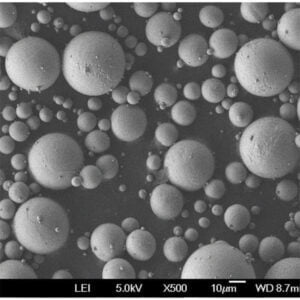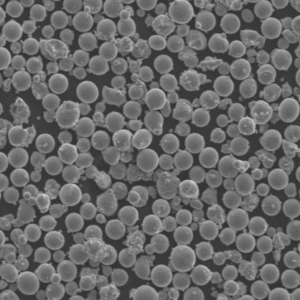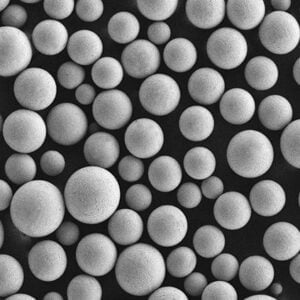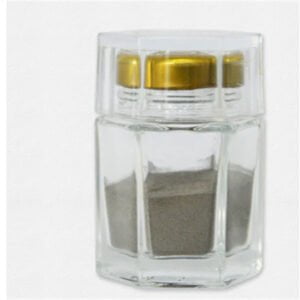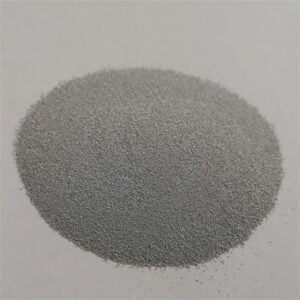티타늄 코팅 다이아몬드 파우더
목차
다이아몬드 분말은 경도가 매우 높아 산업 분야에서 연마재로 널리 사용됩니다. 하지만 다이아몬드에는 몇 가지 한계가 있습니다. 다이아몬드 입자를 티타늄으로 코팅하면 일부 향상된 특성을 얻을 수 있습니다.
개요 티타늄 코팅 다이아몬드 파우더
티타늄 코팅 다이아몬드 파우더 은 표면에 티타늄 금속 코팅이 되어 있는 다이아몬드 입자를 말합니다. 이 복합 재료는 다이아몬드의 경도와 티타늄 코팅이 부여하는 유익한 특성을 결합한 것입니다.
다이아몬드 파우더에 티타늄 코팅의 이점:
- 다이아몬드 공구에서 다이아몬드 입자와 금속 매트릭스 간의 결합력 향상
- 내식성 제공
- 마찰 계수 변경
- 더 높은 작업 온도 구현 가능
- 전기 전도도 조정
- 열전도율 변경
티타늄 코팅 다이아몬드 파우더의 주요 특성:
| 경도 | 최대 10,000HV(다이아몬드 경도) |
| 코팅 두께 | 일반적으로 1~5미크론 |
| 코팅 프로세스 | 화학 기상 증착(CVD) |
| 색상 | 짙은 회색에서 검은색 |
| 본딩 | Ti와 다이아몬드 사이의 카바이드 결합 |
사용 가능한 입자 크기:
- 나노다이아몬드 분말(1미크론 미만)
- 마이크로 다이아몬드 분말(1 - 60미크론)
- 거시적 결정 분말(60미크론 이상)
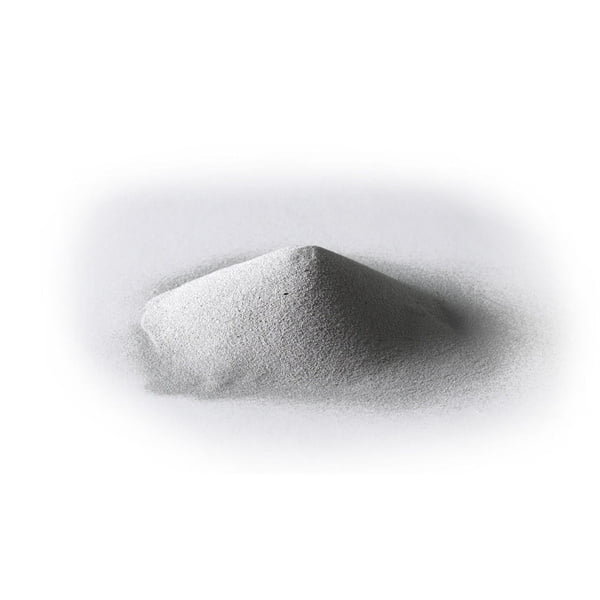
구성 티타늄 코팅 다이아몬드 파우더
티타늄 코팅 다이아몬드 파우더는 외부 표면에 티타늄 코팅이 적용된 다이아몬드 입자 코어로 구성됩니다.
| 구성 요소 | 세부 정보 |
| 다이아몬드 코어 | 천연 또는 합성 다이아몬드 파우더 |
| 티타늄 코팅 | 티타늄 금속, 일반적으로 두께 5미크론 미만 |
| 코팅 프로세스 | 화학 기상 증착(CVD) |
코팅 두께, 균일성 및 품질에 따라 재료의 특성과 성능이 결정됩니다. 고급 코팅 공정을 통해 이러한 파라미터를 제어할 수 있습니다.
속성 및 특성
티타늄 코팅 다이아몬드 입자는 티타늄 금속 코팅이 제공하는 내식성, 마찰 계수 및 기타 이점과 함께 산업용 다이아몬드의 극한의 경도 및 열적 특성의 독특한 조합을 보여줍니다.
주요 속성:
| 경도 | 최대 10,000HV(다이아몬드 경도) |
| 힘 | 매우 높은 압축 및 전단 강도 |
| 내마모성 | 최고 수준의 내마모성 |
| 내식성 | 티타늄 코팅으로 우수함 |
| 열 전도성 | 1200-2320 W/mK |
| 서비스 온도 | 최대 ~1100°C의 공기 중에서 |
| 내화학성 | 높은 불활성, 산/알칼리에 대한 내성 |
| 마찰 계수 | Ti 코팅을 통한 엔지니어링 가능 |
| 전기 전도성 | Ti 두께에 따라 맞춤 제작 가능 |
주요 특징:
- 경도를 위한 다이아몬드 코어와 티타늄 금속 코팅의 복합재
- 코팅으로 부식 방지, 내산화성 제공
- 비코팅 다이아몬드와 비교하여 마찰 거동을 변화시킵니다.
- 전도도, 열 특성 엔지니어링 가능
- 고온 작동 가능
- 매트릭스에 대한 금속 결합력 향상
응용 프로그램 및 용도
티타늄 코팅 다이아몬드 파우더는 다양한 산업 분야에서 사용되고 있습니다. 몇 가지 주요 응용 분야는 다음과 같습니다:
자동차
- 연삭 휠
- 절단 도구
- 폴리싱 컴파운드
- 엔진 부품
항공우주
- 복합 재료용 연마재
- 정밀 드릴링/연삭
- 폴리싱 애플리케이션
전자 제품
- 다이아몬드 웨이퍼링 블레이드
- 폴리싱 애플리케이션
- 열 분산기
건설
- 석재/세라믹 커팅
- 드릴링/연삭 공구
- 와이어 톱
- 석조물 애플리케이션
의료
- 정밀 절삭 공구
- 연마/연마 도구
- 치과용 버/드릴
석유/가스
- 드릴 비트
- 다운홀 도구
사양 및 표준
티타늄 코팅 다이아몬드 파우더는 다양한 입자 크기 분포, 코팅 두께, 순도로 제공되며 응용 분야 요구 사항에 맞게 맞춤화할 수 있습니다.
파티클 크기:
| 마이크로 다이아몬드 | 1 - 60 미크론 |
| 나노 다이아몬드 | 1미크론 미만(D90 <1μm) |
| 거시적 결정 | > 60미크론 이상 |
티타늄 코팅 두께:
- 일반적으로 1~5미크론
- 사용자 지정 두께 사용 가능
표준 준수:
- ISO 13938 - 체 분석
- ASTM E11 - 입자 크기 특성 분석
- 애플리케이션 사양에 맞게 맞춤 설정
공급업체 및 가격
티타늄 코팅 다이아몬드 파우더 는 여러 전문 공급업체에서 상업적으로 판매합니다. 가격은 다음에 따라 다릅니다:
- 입자 크기 분포
- 구매한 볼륨
- 코팅 두께/품질
- 제품 사용자 지정
대표 가격:
| 600 그릿 Ti 코팅 다이아몬드 | 캐럿당 $7 - $15 |
| 나노다이아몬드 Ti 코팅 | 캐럿당 $200 - $600 |
맞춤형 파티클 사양 및 견적은 전문 유통업체에 문의하세요.
주요 공급업체
- 고급 다이아몬드 기술
- 다이아몬드 머티리얼즈 GmbH
- 에코 다이아몬드 솔루션
- SP3 다이아몬드 기술
- 델라웨어 다이아몬드 나이프
티타늄 코팅과 비코팅 다이아몬드 파우더의 비교
티타늄 코팅 다이아몬드 파우더는 코팅되지 않은 다이아몬드 입자에 비해 몇 가지 장점과 차이점이 있습니다:
| 산화 저항 | 보통 | 보호용 티타늄 코팅으로 우수 |
| 도구 수명 | 표준 | Ti 레이어로 인한 수명 연장 |
| 매트릭스에 본딩 | 가변 접착력 | Ti와의 우수한 카바이드 결합 |
| 마찰 계수 | 표준 다이아몬드 값 | 낮은 비아 Ti 코팅 설계 가능 |
| 열 전도성 | 표준 다이아몬드 값 | Ti 두께에 따라 변경 가능 |
| 전기 전도성 | 비전도성 | Ti 레이어를 통한 제어 가능 |
| 비용 | Lower | 더 높지만 성능 향상을 통해 상쇄할 수 있습니다. |
요약하면, 다이아몬드 파우더의 티타늄 코팅은 다이아몬드 입자와 관련된 극도의 경도를 유지하면서 여러 성능 매개변수를 향상시킵니다.
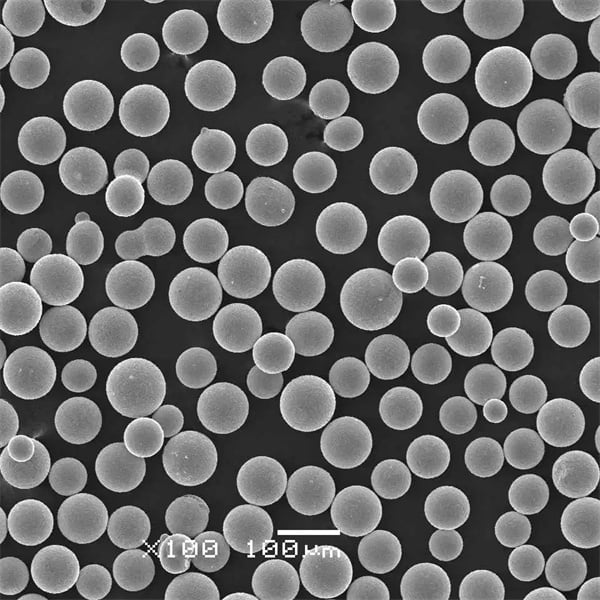
자주 묻는 질문
다음은 티타늄 코팅 다이아몬드 파우더에 대한 몇 가지 일반적인 질문에 대한 답변입니다:
티타늄 층을 적용하기 위한 코팅 과정은 어떻게 되나요?
일반적으로 티타늄 코팅을 다이아몬드 미립자 또는 나노 입자에 균일하게 증착하기 위해 화학 기상 증착(CVD)이 사용됩니다. 이를 통해 코팅 두께를 제어할 수 있습니다.
티타늄 층과 다이아몬드 코어의 결합력은 얼마나 강한가요?
티타늄 코팅과 다이아몬드 파우더 사이에 매우 강력한 카바이드 결합이 이루어집니다. 따라서 뛰어난 접착력과 내구성을 보장합니다.
티타늄 코팅 다이아몬드 파우더를 사용하는 산업 분야는 무엇인가요?
자동차, 항공우주, 전자, 건설, 의료, 석유/가스 산업에서는 연삭, 연마, 드릴링, 절삭 공구, 엔진 부품 및 다양한 마찰 및 마모 응용 분야에 이 소재를 사용합니다.
공구 수명 향상에 가장 적합한 입자 크기의 티타늄 코팅 다이아몬드는 무엇인가요?
일반적으로 나노 및 마이크로 크기의 입자는 다이아몬드 공구의 결합 강도, 내마모성 및 작동 수명을 크게 개선하는 동시에 나노 크기의 다이아몬드 날카로움을 유지합니다.
모든 다이아몬드 입자 크기에서 코팅이 균일한가요?
첨단 화학 기상 증착(CVD) 공정을 통해 나노 다이아몬드부터 거대 입자까지 다양한 다이아몬드 분말에 고품질 코팅을 할 수 있습니다. 코팅의 일관성이 전반적인 성능을 결정합니다.
다이아몬드 파우더를 코팅하는 데 어떤 금속도 사용할 수 있나요?
티타늄은 코팅 접착력, 부식 방지, 내열성, 마찰 및 전도성과 같은 재료 특성의 변경을 최적으로 조합하여 제공합니다. 텅스텐이나 크롬과 같은 다른 금속도 일부 다이아몬드 코팅 분야에 사용됩니다.
티타늄 코팅 다이아몬드 연마재의 일반적인 가격은 얼마인가요?
가격은 품질, 맞춤화, 입자 크기 및 부피에 따라 크게 달라지며, 대형 Ti 코팅 매크로다이아몬드 파우더의 경우 캐럿당 약 $7부터 정밀 나노다이아몬드 등급의 경우 캐럿당 $600까지 다양합니다.
결론
결론적으로, 티타늄 코팅 다이아몬드 파우더 는 다이아몬드 입자의 극한의 경도를 유지하면서 나노 두께의 티타늄 금속 코팅에서 내식성, 열 안정성, 맞춤형 마찰 거동, 전도성 및 결합 특성을 얻습니다. 이 두 소재의 결합은 까다로운 산업 분야에서 다이아몬드 공구와 부품의 적용 범위를 넓히고 성능을 향상시키는 독특한 복합 소재를 만들어냅니다. 나노 다이아몬드에서 거대 분말에 이르는 입자에 균일하고 내구성 있는 코팅을 보장하는 강력한 CVD 코팅 공정을 통해 티타늄 코팅 다이아몬드 연마재는 더 높은 작업 온도, 속도 및 수명에서 다이아몬드의 기계적 성능이 요구되는 고정밀, 고난도 가공 및 마찰 시나리오에서 계속 주목을 받게 될 것입니다.
공유
중국 칭다오에 본사를 둔 선도적인 적층 제조 솔루션 제공업체인 MET3DP Technology Co. 당사는 산업용 3D 프린팅 장비와 고성능 금속 분말을 전문으로 합니다.
관련 기사
Met3DP 소개
최근 업데이트
제품

3D 프린팅 및 적층 제조용 금속 분말
문의 정보
- 칭다오시, 산둥성, 중국
- [email protected]
- [email protected]
- +86 19116340731






